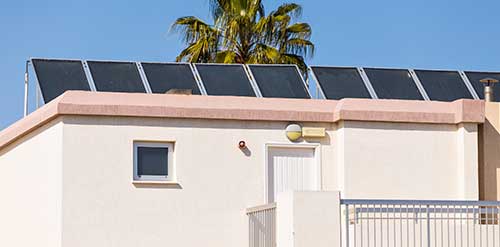Hyundai Motorstudio Senayan Park
Hyundai Motorstudio Senayan Park
Newsroom
The official news from Hyundai Motorstudio Senayan Park and a collection of innovative articles on mobility and sustainability here.
-
Wondering How Do Solar Panels Work? Learn Here!
- Hyundai Motorstudio Senayan Park Senayan Park 2022.06.09
-
Solar panels will produce maximum power in sunny and hot conditions. Though it can still work in cloudy weather, the results are not optimal as expected. This is because photovoltaic components require light particles to produce light, called photons. But, how do solar panels work?
Depending on the light conditions, photons will increase in number in sunny and hot conditions. In contrast, photons will decrease when it is cloudy. Ideally, solar panels should be exposed to direct sunlight to generate sufficient power.
How Do Solar Panels Work?
Solar panels are composed of many layers of semiconductor cells made of silicon material. So, when light shines on this layer, a new electric current will be generated. In more detail, here are the steps.
1. Light Activates the Panel
To capture the light, the system uses panels made of silicon material that contain photovoltaic cells. Besides the silicon sheet, the panels consist of a metal frame, cables, and a glass case surrounded by a special film.
The series of panels are placed together in sequence and placed on the roof or open area. This position makes it easier for photovoltaic cells to capture the light containing photons, which will be processed.
2. Cells Produce Electric Current
Actually, these cells don't need direct sunlight, even work on cloudy days. However, the hotter the sun, the more electricity it can produce. Each cell is assembled from two thin semiconductor layers, one layer for positive electric current and one for negative electric current.
When the light hits a photovoltaic cell, it energizes the cell and forces electrons to escape from the atoms. The electrons are in constant move around the semiconductor layer. This constant movement triggers an electric field, which produces an electric current in the form of DC (direct current).
3. Electric Current Converted
At this stage, the solar panels are capable of generating electricity even on DC type, which is not the type of power that is used for various purposes. Since the electricity for household appliances is AC (alternating current), an inverter must be applied to convert DC current to AC.
Inverter is a dedicated device to convert DC into AC. In a modern solar panel, the inverter has become an integrated system that is often paired directly with the panel. The converted electricity can be used directly to power all electronic devices.
4. Electricity Generates Power
When electricity has been converted from DC to AC, the current is distributed to various household appliances to provide power. The way it works is not much different, so there is no need to change the installation if you want to switch to solar panels.
Its utilization can even be combined with electricity from other sources, as from generators. Especially if you need more power, or to anticipate a power outage, solar panels can be used simultaneously.
5. Electricity Meter
A common problem with solar panels is during the rainy season. Solar panels cannot harvest photons which are the main material. Or vice versa, when the sun continues to shine, the harvest will be abundant and there is a surplus.
From here, a regulator is needed, usually an electricity meter or something similar. This device will manage power from two different directions, from its source and its utilization. The tool will balance the use of electricity generated by solar panels.
Considerations when Choosing Solar Panels
To get the best product that can last long and produce sufficient power according to its capacity, there are a number of points that must be considered.
1. Specifications
Solar panels are available in different specs with different capabilities. Choosing the right specs can be confusing, but this is important if you want to get the right solar panels for your needs.
2. Price
The price of solar panels is influenced by many aspects such as capacity, components, brand, and others. What must be understood, the solar panels are mostly available in the form of 'panels', not with other components and installations.
3. Efficiency
The conversion of electricity generated by solar panels generally reaches 50%, if you refer to the packaging label. In fact, the electricity conversion efficiency rate is only 15%, and 21% for the highest.
4. Quality and Warranty
The high quality will ensure the solar panels stay for as long as possible, even up to 20-30 years for the best product on the market. The problem is, the best quality will come at a high price. So, be sure to look for solar panels that offer a warranty.
5. Appearance
Solar panel system consists of several components, which are assembled into one. In standard form, solar panels are square. But a contoured house clearly needs a different design, and this should be taken into account. Flexible solar panels are available, but the price is obviously much higher.
Solar panels are currently used for various purposes because of their benefits, both for households or companies. One of them is the internet industry leader, Google, which utilizes solar panels at its headquarters in California.




